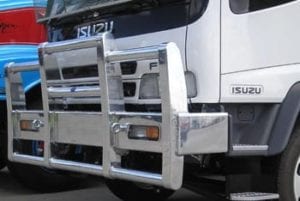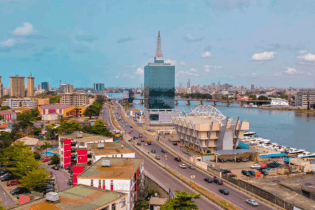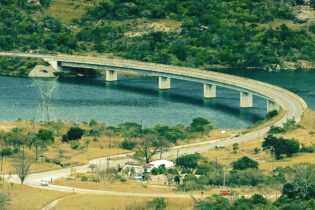It is traditional, in many parts of East and Southern Africa, for transporters to fit “bullbars” onto the front of their trucks.
As you know, this is also common practice in Australia, where they are referred to as “rooguards”; to fend off Kangaroos in the outback. There are some issues that we need to understand and use as input to our decisions:- Bullbars have been fitted to protect the front end of the truck against damage caused to the vehicle by a collision with an animal. This happens when trucks are driven over long distances, in rural areas, at night. Such transporters are adamant that fitting a bullbar makes economic and safety sense: A collision with a large animal will destroy a very expensive front end of the truck and, because the headlamps are likely to be destroyed, will make the vehicle unsafe to drive.
- Bullbars are seen as a bad safety issue by authorities, as they are not pedestrian-friendly. To an increasing extent, trucks are being designed and constructed to be pedestrian-friendly, ie they have crumple zones to protect the pedestrian in the case of a collision. Fitting a bullbar removes the protection for pedestrians.
- In some Southern African countries, the regulations allow an extra 300mm to their overall length limits, for the provision to fit bullbars. Ie if an interlink or a truck and trailer is fitted with a bullbar, its overall length limit is 22.3metres and not 22 metres. SADC’s recommendations also include this provision.
- The University of Dar es Salaam is carrying out a project on behalf of the EAC, to determine the dimensional limits for the EAC. (Last year, FESARTA was involved in a similar project to determine the load limits). When this project is completed and the limits agreed, the outcomes may well influence what is already in SADC’s document; since the three RECs work together on such matters.
The use of bullbars puts one at higher risk of culpable homicide.
Toyota is now only prepared to fit a small central one protecting the radiator on a 4×4 and not covering the crumple zones. It is understood that legal /insurance are also in sympathy with this and its only a matter of time when it is challenged in the courts. All the major Fuel companies now will not allow the fitment and this is a clear indication of the risk.” Where to from here? As the road transport industry:- do we agree with the fitting of bullbars,
- if so, do we ask for an extra 300mm for them (as per SADC’s recommendations), or
- do we disagree and FESARTA proceeds to have their provision removed from regional recommendations?








